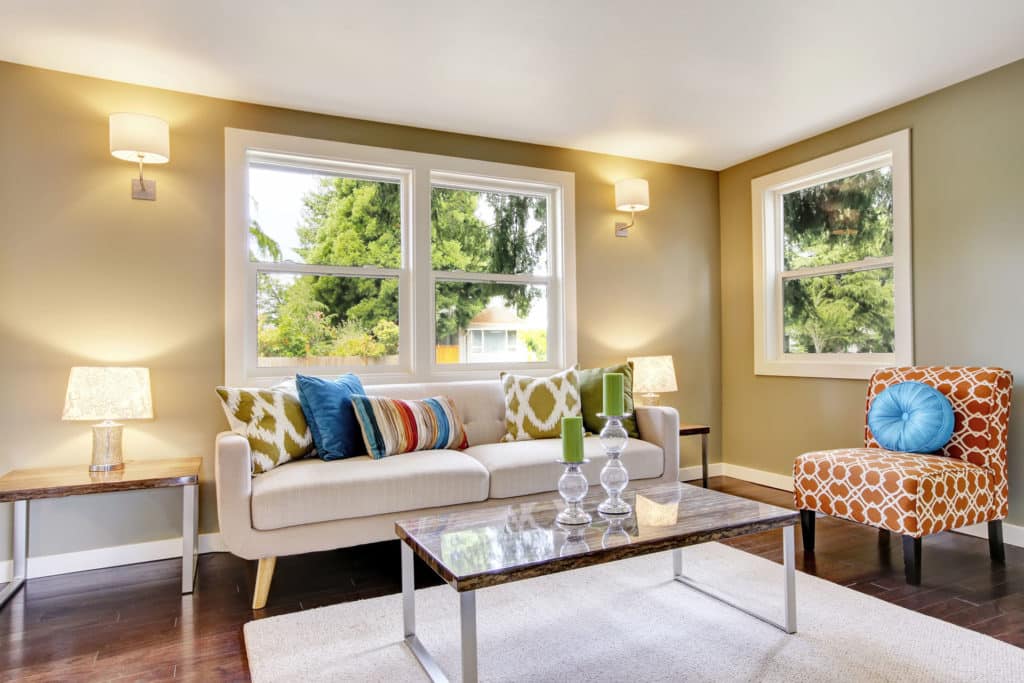Vinyl is a synthetic, water-resistant plastic. It is used as a cladding material for walls and windows. It can also be used for decorating walls and giving them the appearance of wood. Vinyl is a weatherproof material and is thus used as protective material.
Vinyl is not too heavy on the pocket and is readily available in the market. It is lightweight and strong which adds to its desirability. This makes it a popular choice for home decoration and maintenance.
However, vinyl has little tolerance for harsh temperatures and is sensitive to climatic variances. It often deforms, cracks, melts or warps due to periodic temperature differences. Denver and Colorado Springs experience temperature hikes throughout the year. Let us see how temperature damages vinyl sidings at homes.
Melting due to Concentrated Heating
Vinyl has a fairly high resistance to heat and does not melt like low grade plastic when exposed to sunlight. However, the problem occurs when concentrated sunlight falls on it for prolonged durations.
Often windows and other glass materials reflect sunlight and concentrate it on one spot. Vinyl gradually starts warming up due to concentrated heat transmitted by sunlight. As the temperature crosses 75 degrees Celsius, vinyl sidings start to melt. They lose their shape and functionality.
Uneven reception of heat by vinyl sidings causes one side to melt while the other remains intact. Melted vinyl sidings are aesthetically unpleasant.
Brittleness due to Cold Temperature
The energy from the sun causes vinyl sidings to expand in summers. When temperature drops, the expanded vinyl contracts. This distortion in vinyl’s structure due to subsequent contraction and expansion causes it to become brittle.
The brittleness causes vinyl sidings to break and crack due to extremely cold temperatures.
Damage Caused by Heavy Winds
Vinyl is a lightweight material. It does not hold well against strong winds and can get blown away. This usually happens when vinyl sidings aren’t properly fitted. Vinyl expands during summers.
If vinyl has been nailed in too tightly, the expansion will create tension which causes the siding to buckle. When the wind blows, the damaged and buckled vinyl gets pulled away, leaving behind an ugly patch and a lot of work to fix it.
Is there a Better Alternative?
If you are looking for sidings for a newly built home or a recently refurbished one, we recommend you to go for fiber cement siding.
Fiber cement is a commonly used building material which is made by reinforcing cement with cellulose fibres. It wins by quite a margin compared to vinyl due to the following properties:
- Fibre cement is sturdy and can withstand harsh temperatures. It does not melt.
- It is fireproof and resistant to termites and rot.
- It has excellent insulating properties and provides protection from outside temperature.
- It does not deform or crack. It can withstand high speed winds.
- Good quality fiber cement has a lifespan of 50 years, making it the most durable amongst all siding materials.
- It is aesthetically pleasant and can give the appearance of wood or masonry.
If you are looking for a reliable consultant for the installation of fiber cement sidings, look no further. James Hardie Fiber Cement Siding offers premium quality fiber cement sidings with a 30-year warranty. So request a quote now and get the best fiber cement sidings in Denver and Colorado Springs.


